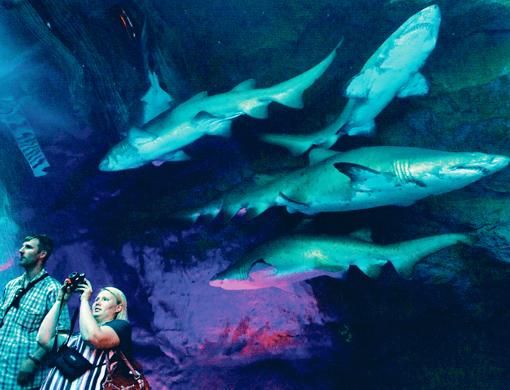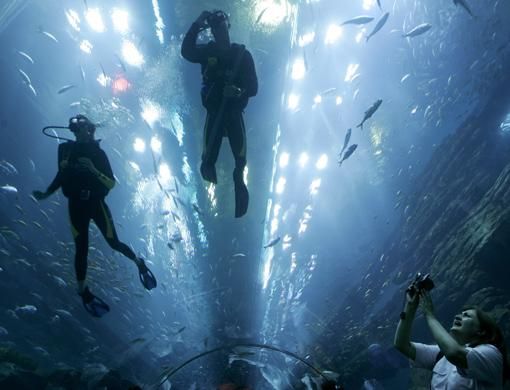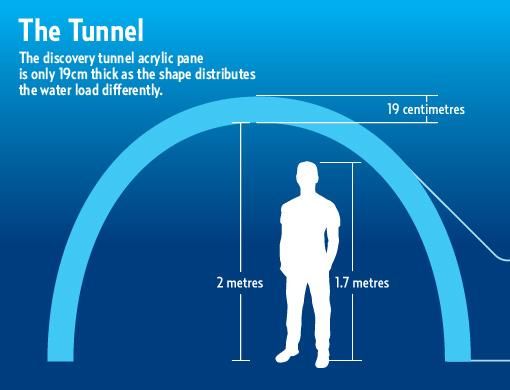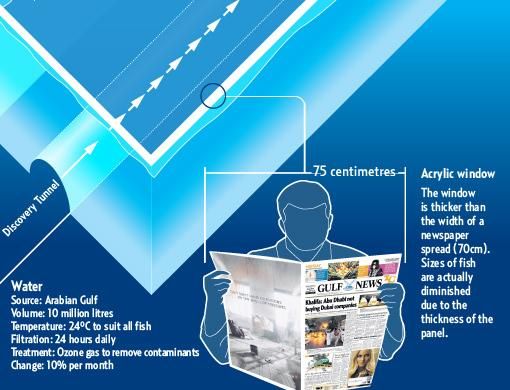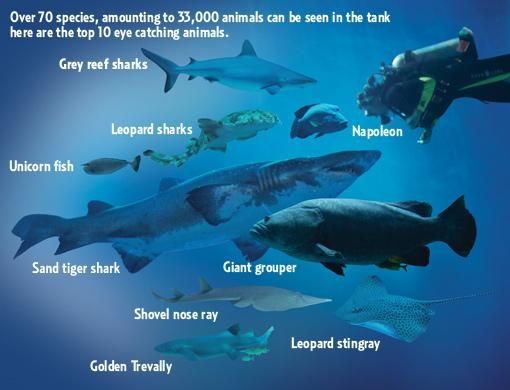Dubai: Strapping on a mask, flippers and peering into a giant tank where more than 40 sharks are minding their own business - you might take a second to wonder before jumping in to join them - will they eat me?
Quiz: Test your knowledge of the deep
Watch video of aquarium action
Read in-depth report on Dubai Aquarium
Dubai Aquarium and Underwater Zoo has just launched its shark dive in the world's biggest suspended tank, at Dubai Mall.
"Suspended" because there is another floor below it so 10 million litres of water are held up by columns that distribute the load into the building's foundations.
But the answer is no, the sharks -sand tigers, grey reef, tawny nurse, leopard, blacktip or zebra sharks - will not eat you because they get fed everyday at 4pm.
Their predatory instincts have been conditioned out of them through regular feeds and training.
"People would not believe that you can train sharks," said Paul Hamilton, head curator of Dubai Aquarium, "but you can train them to feed on a particular type of food at a particular time of day."
It took about two months to train the sand tiger sharks, considered the top of the food chain of this recreated aquatic habitat, to associate only certain fish as food.
"So now, if I take herring or squid into the tank I would get zero response from sharks. We did that by creating zero-success. Sharks never get any opportunity to eat herring or squid so the scent doesn't create feeding motivation," said Hamilton.
"They eat mackerel, tuna and milkfish so we make sure there is zero success with those fish for other species - as soon as the sharks smell it they know it's their food. Once you get a routine set up and trust built up, the animals know that they get fed at certain times and they lose all predation."
The stingrays eat at 2pm. A clicker used by the divers alerts them that it's dinner time. Half of the tank's entire food intake is distributed by the public through broadcast feeding, or thrown pellets from a viewing platform in the Underwater Zoo.
"You are limited by what can coexist. Some fish are too easy targets. There is some science in species selection and what goes together&A lot of larger animals do have to be targeted [at feed times] because when we throw food to the sharks we don't know who gets what," said Hamilton.
The sharks are microchipped which helps to identify them if markings do not give them away first. Divers "stick-feed" by holding out a stick with food on the end to particular sharks.
"You do have to be quite calculated in your approach to feed the animals because they form their hierarchies - I eat first, you eat last. With schooling fish it can't be done. They know how to work these things out because that's how they do it in the wild."
The first sign of an unwell shark or fish is the lack of motivation to feed. Hamilton's team is made up mainly of marine biologists, supported by a veterinary clinic, outsourced and brought in when needed.
"We can segregate fish but if we are ever concerned about an individual, we would take it out and quarantine it. We do it all the time. It's part of managing a tank this size."
Jim Reilly, exhibit supervisor, oversees food preparation on a daily basis. Fish are gutted and prepared every morning after having been removed from the freezer well in advance.
It is a truly cosmopolitan diet with mackerel from the UK, krill from Japan and herring from Scandinavia. Talapia and clams come from the UAE.
"We source locally where we can, but generally the food comes in globally. The sharks get mackerel which doesn't occur where they come from, but they love it. We put vitamins and antioxidants in their food to make sure they are getting everything they need."


